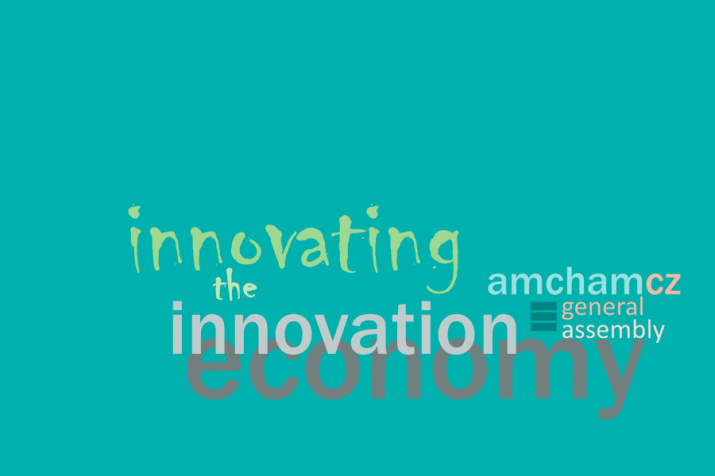
“Continuous improvement makes incremental changes in country’s competitiveness in the short term. Innovation is what brings substantive, major changes to the economy and is what builds lasting competitive advantage. The question is how much innovation do you need”, Weston Stacey opened the session. Innovative workforce is a prerequisite. An improver focuses on practical adjustments, efficiency (makes now better). An innovative person challenges what we do now and takes more risk, has long-term visions for what they want to do with the company (makes tomorrow bigger).
Rebecca Grattan of Avast Software explained that if you work for an organization where innovation, research and development is fundamental to success and part of the business DNA, you build that into everything you do, into your purpose and your goals. Avast applies “growth mindset recruitment”. The company is looking for “the founder’s mentality in a mature company.” “We are looking for the ability to innovate. Not for everybody, but certainly for people who are in roles that are about the growth of the business.” Moving on to the issue of an innovative company, Rebecca defined it as a company that aligns all its processes with the growth mindset. “Recruit, develop, reward, celebrate”. “Leaders may not be innovative themselves, as it does not come naturally to everybody, but as a minimum they need to be able to allow innovative people to flourish within the organization.”
Rebecca has also elaborated on their agile squads as a model for fast collaborative problem solving. “You need to be able to reward failure as a way to progress.“
Kryštof Radek of Johnson & Johnson highlighted the fact that it is sometimes leadership, C-suite talking about support to innovation, but torpedoing it in real time when it comes to ideas proposed by teams from lower structures of a company. Johnson and Johnson are committed to design thinking. They train not only staff at the lower levels of the organization, but also leaders to look for the positives, encourage people, allow people to experiment within a defined time period. “I like I like I wonder” principle of feedback is applied. Leaders can learn key sentences to drive innovation. “It is couple of sentences that leaders need to learn, and everything can change.”
Ondřej Krajíček added the Y Soft perspective. For him, most people are capable of innovating. It is the fear or uncertainty threshold they need to leap over to deliver innovation. “If we remove this fear barrier, we can make almost anyone to innovate.” “It is about how safe, stable, transparent is the environment we live in.” This includes legislation, cost of living, basic risks, and this is where the government plays a role, including the area of corruption. How do you know whether you are rather improving than innovating? It does not matter as much because someone’s innovation means other’s incremental step forward. Disruption is a risk that should not be prevented, but it should be managed. “Leave it to the individual teams to define the pace they are comfortable with and show them what is the ultimate result you need. And reward the behavior as much as the result.”
In the debate about the Czech educational system, Ondřej pointed out that originally, learning facts was meant to teach people problem-solving and critical thinking. “Latin used to be mandatory at secondary schools. The point was not to teach people Latin as much as to build the right thinking patterns, as it is a very structured language. This has been replaced by teaching mathematics.”
Michel Perret of Carrier Refrigeration explained how they approach innovation. “The right phase to introduce innovation is during the product development cycle.” 80% of the quality of the product, productivity, cost is embedded into design. They include as many stakeholders into the design phase as possible (suppliers, operators, R&D, engineering). The remaining 20% of product quality, productivity, etc are targeted during the improvement phase. They try to capture all ideas.
“A company has to allocate enough resources, money to innovation with the understanding that 9 out of 10 innovation changes might fail,” he added.
Sanjiv Suri of Zátiší Group highlighted the blurred line between innovation and improvement. „We were improving around the user experience all the time and we thought we were innovating, until we got to the definition of innovation which is basically disrupting yourself.“ Due to impact of the pandemic, they now do more of a cooperative business, putting together their strengths and strengths of their partners. They also focus on the mindset change. „Growth mindset, having clear goals, transparency and psychological safety. They are fundamental to creating the environment for innovation for the future.“
Still, 90% of success in their industry is the execution, because you can have an idea but if you are not executing it, innovation will not happen. “The idea is to put together teams that are able to create, innovate, and at the same time you need the execution, to have the balance.” The educational system should teach how to “learn new things and how to very quickly unlearn what you learnt yesterday and learn something else. And how to have self-confidence to do that.”
The presentation and a video from the session is available to members.